“There Is a System of Aesthetics That Only Graffiti Writers Understand”: Martha Cooper Runs with 1UP in Berlin
|Calum Gordon
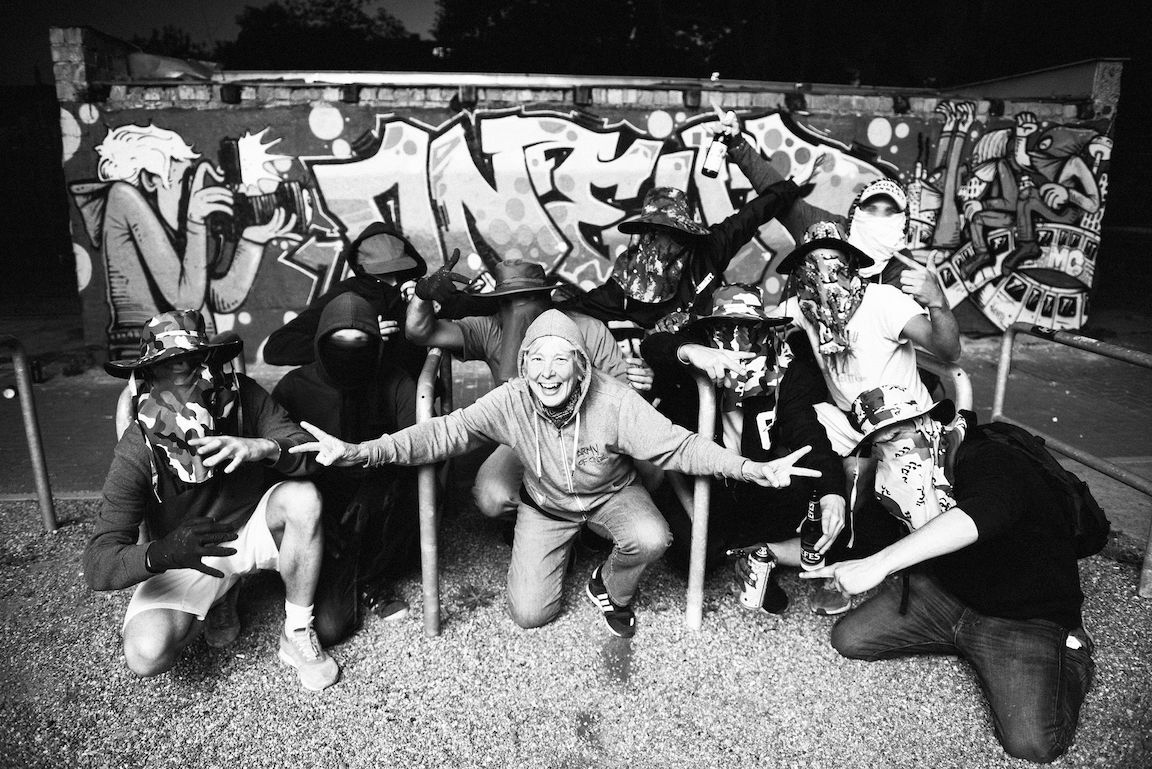
Famously documenting the blossoming of the graffiti movement in 1970s and 1980s New York City, Martha Cooper’s work is an essential insight into an otherwise codified world. Last summer, she linked up with Berlin’s infamous 1UP – One United Power – a crew that straddles an underground scene and more visible cultural spheres, having mastered the art of YouTube virality and collaborated with the likes of COMME des GARÇONS’ Junya Watanabe. Together, Cooper and 1UP represent graffiti’s past, present, and future, from the movement’s birth as an out-law art form to its ubiquitous (but still contentious) presence in the modern cityscape. In the following interview, originally featured in the debut issue of WIP – a new print magazine by Carhartt Work In Progress – editor Calum Gordon speaks to Cooper about running with 1UP, her early years as a photojournalist, and the radical renewal of graffiti.
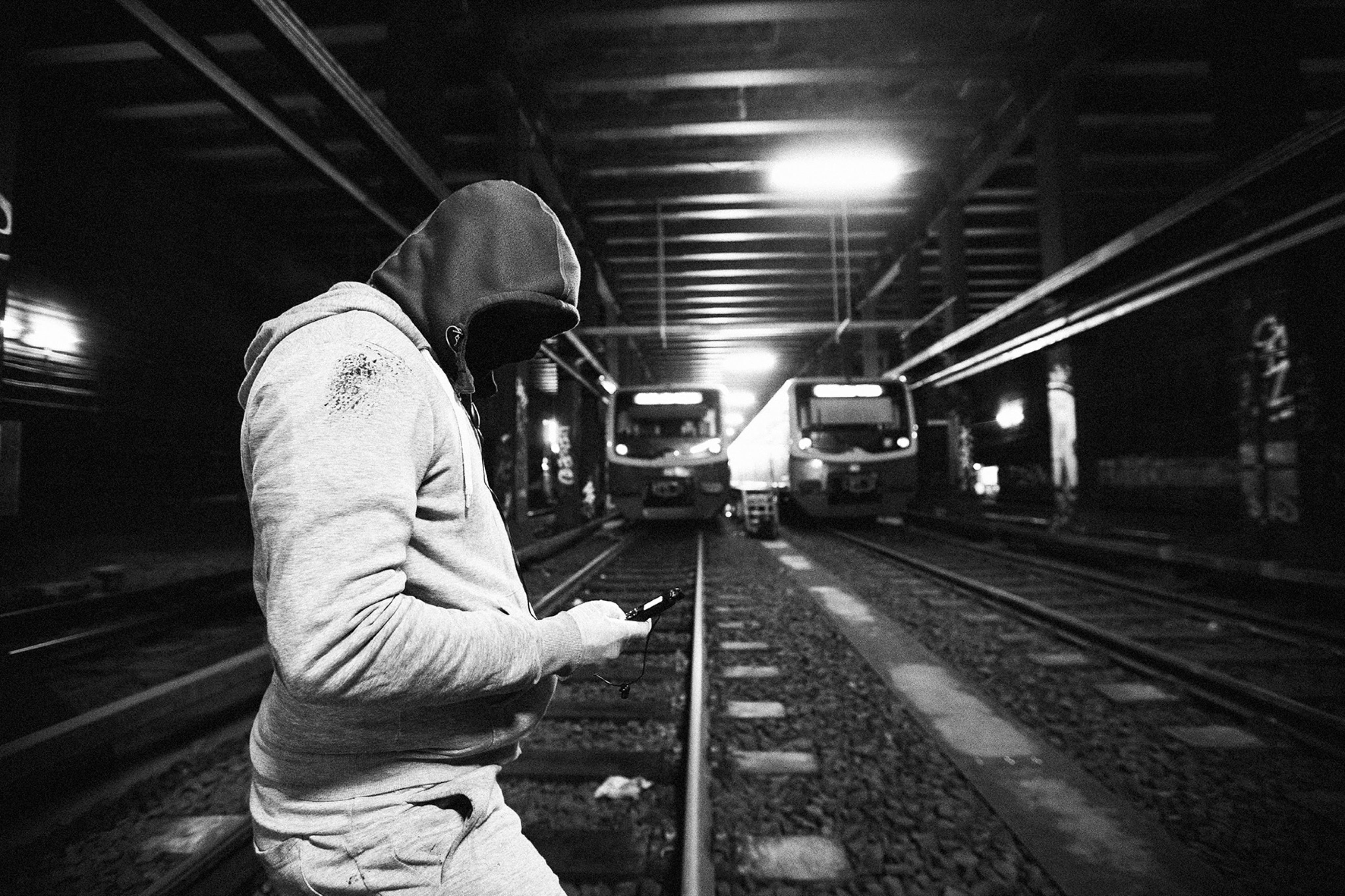
There are few things Martha Cooper hasn’t seen first-hand. But a backjump – the process of rapidly spray-painting a train as it pulls into a station, before making a quick getaway – is one of them. Or it was, until she joined up with graffiti crew 1UP in Berlin in 2017. The New York-based photojournalist is no stranger to side-streets or railway tracks, having dedicated over five decades to documenting the city’s subcultures, following similar graffiti groups and catapulting their work into the mainstream through a series of photobooks. Throughout the late 1970s and the 80s, it was Cooper’s images that told the story of this new, disruptive form of art.
“You understand it better,” Cooper says of anonymously running the streets of the German capital. “Your heart is pounding and you’re hiding and you’re running. There’s always a chance of getting caught. But I’m interested in how all of these things work.” When we speak over the phone – Cooper in New York, me in Berlin – she has a cold. She’s recently returned from China, immediately after a weekend spent documenting the Women’s March in New York. “There were a lot of pro-Trump comments on my Instagram after that. I was like, ‘I have followers who are pro-Trump?!’” she laughs. Her Instagram boasts of a following of over 194,000, yet Cooper is very much the embodiment of an old-school photojournalist, constantly on the streets searching for subjects to photograph.
Cooper started early. Her father owned a camera store in her hometown of Baltimore. She took her first photograph in 1946, aged only three years old. In high school she won an honorable mention in a competition run by the camera company Kodak. By the 1970s, she had gone on to become a staff photographer at the New York Post and a freelancer for National Geographic, where she shot all manner of subjects: from cover stories about beekeeping to tattoo-artistry in Japan after a brief stint living in Tokyo. It’s her work documenting the streets of New York, though, for which she is best known.
Cooper was introduced to the world of graffiti by a young graffiti writer by the name of HE3 (she refers to the moment of realising that his tag was actually his nickname as an “a-ha!” moment). Ever since then, she’s been fascinated by the idea of “decoding” the tags that pervade the city’s landscape, on everything from train carriages to trash cans. “There is a system of aesthetics that only graffiti writers understand,” Cooper says, adding that an experienced writer will even know when paint-drips beneath a tag are purposeful or accidental.
She studies the details of their tags like an art critic or historian, which is unsurprising given her background studying anthropology. “Writers look at a piece and will talk about this particular ‘s’ and how they put an arrow at the end of it. They can really dissect a piece; they become their own art critics. That interests me.”
In 1984, along with photographer and videographer Henry Chalfant, Cooper released Subway Art – a photo book documenting New York’s graffiti scene during the 1970s. The two initially faced a slew of rejections from American publishers. At that time, graffiti was considered by many to be a visual accompaniment to degeneracy and violence of pre-Giuliani New York. It took a trip to a book fair in Frankfurt, Germany to secure a publisher, the UK based Thames and Hudson. In the decades that followed, perceptions of graffiti began to change as it became more prevalent within popular culture and artists such as Banksy earned acclaim. Meanwhile, Cooper has gone on to release several other photo books which examine graffiti and other core elements of Hip Hop: B-boying, DJing and Rapping. She’s since published The Hip Hop Files, and We B*Girlz.
Cooper is aware that due to popular artists adopting the medium, taking spray cans to the streets, graffiti and street art are often viewed as the same thing. However, she says there is a distinct difference. Graffiti’s tropes were taken from the trainyards and walls of urban spaces and moved into galleries, becoming government-sanctioned or commercially-commissioned murals. While Cooper has worked with, and is friendly with, many who made that jump to the art world (The Hip Hop Files includes original pieces by the artist Keith Haring, and Cooper is friendly with the graffiti writer-turned-artist, Futura) – she is still fascinated by the scene’s less accessible aspects.
Graffiti, like many other aspects of contemporary culture, is often seen as having been gentrified, somehow stripped of much of its original authenticity. Its perils romanticized and the practice sanitized by corporate companies or gallerists. In 1UP, however, Cooper found a crew capable of evoking the spirit of the graffiti scene which first attracted her. Dangerous, illicit, impactful – like a precisely planned backjump in broad daylight. “We went back to being underground,” she says. “Which I like.”
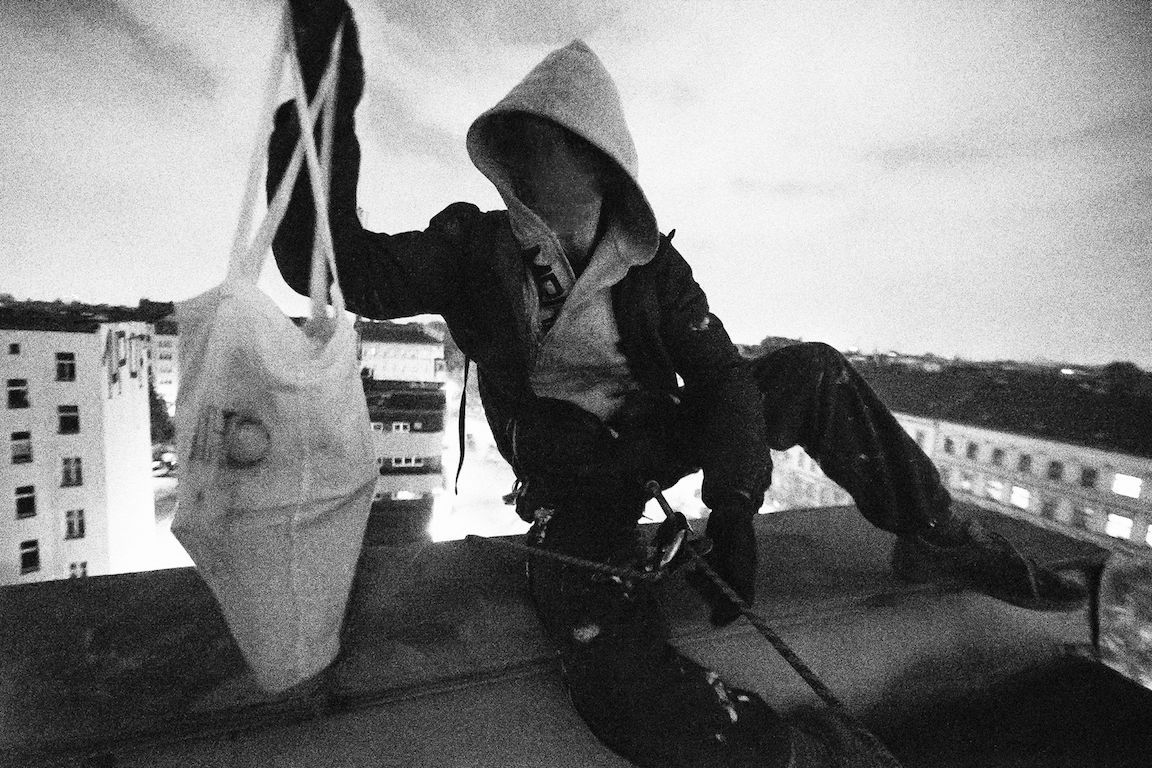
ON WORKING WITH 1UP
Initially, my friend and I were thinking of doing a book about cats in Istanbul. We had not really been thinking hard about it. We both like cats, we’ve been to Istanbul, so we thought it might be fun. I think Tim from 1UP was the one that said: “Well, why don’t you do a project with us?” or something like that.
I have a background as a news photographer. I worked for the newspaper for three years in New York City. I think that’s the kind of assignment where you are trying to be alert to what’s happening around you. It was similar. I would also say that I am not as sharp as I used to be. I felt a little rusty. Afterwards, I always say: “Well, I should’ve done this, why didn’t I do that, why didn’t I stand here?” Some of the 1UP actions are technically very difficult. It’s dark and they don’t want you to use a flash. So, it’s very much like a news photographer, where you pretty much have to capture stuff on the run, and you can’t really say: “Could you do that again?”
ON INSTAGRAM
I was not an early adopter. When I first heard about Instagram, and even when I first heard about taking pictures on your phone I was poo-pooing it, like “Oh no, that’s stupid…” We came out of an era where you’re not supposed to share your pictures. You’re supposed to license them carefully, you know, and not have them spread all around. The idea is to keep them exclusive and to know exactly where every image of yours is being used. And then, to go after somebody who has misused it – that has gone out of the window with social media. People are copying images and posting images. I try to keep my own vintage images off the web, and it’s absolutely impossible to do that. I don’t have a website because of so many unauthorized uses. You just can’t control it. My first reaction was to hoard my images, and in a way I still do that with the older images. But now it’s a lot of fun.
I realise that we have become our own publishers, because we are in charge of what we can post, and how we can caption that post. We don’t need a publisher or an editor to tell us yes or no, or to wait for a year before they will decide if someone will publish your book, or whatever. We can just throw it out there. Having people react to it immediately is very rewarding. Because you know that people are actually looking at it. On the whole, I am enjoying Instagram.
ON LEARNING TO DECODE GRAFFITI
First of all, it’s a mess of nothing, but then when you understand that these are individual names, it became fun to sort them out and identify them. There were definitely names that you would see again and again, and you knew that person had been there and written that tag. That’s basically what 1UP are doing, but they’re doing it in a much more organized way with more than one person, writing the same piece and tag.
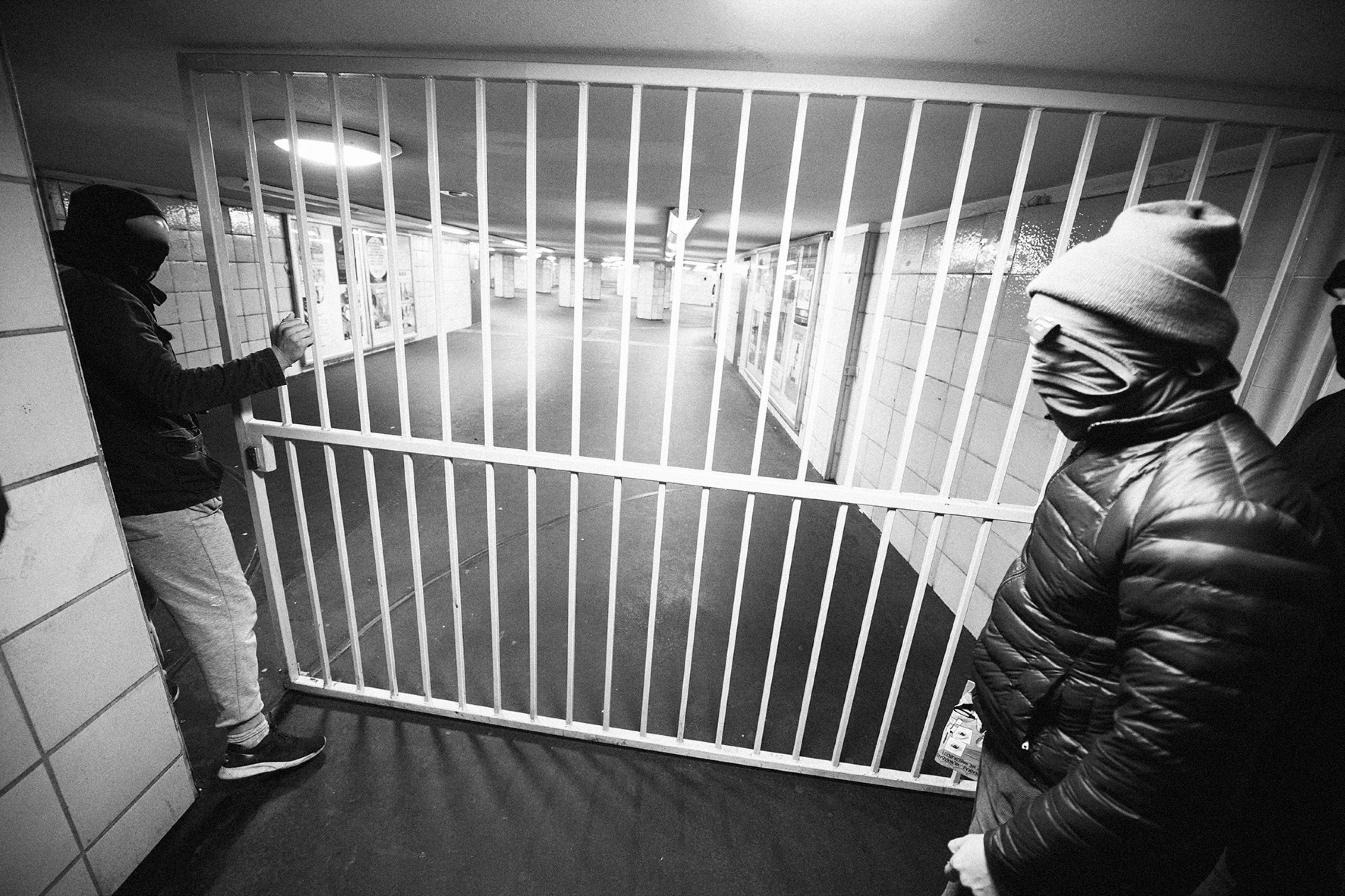
ON ANTHROPOLOGY INFLUENCING HER WORK
I was interested in tribal art. Although the last thing that a graffiti writer wants to be called is a “folk artist” [laughs]. I would never call them that to their face. There are definitely similarities between the way the art forms are handed down in tribal societies and the way graffiti has evolved. There is a system of aesthetics that graffiti writers understand, that you pretty much have to learn if you want to appreciate graffiti. Whether drips are purposeful drips or accidental drips… I mean, there’s a whole bunch of stuff. A graffiti writer can analyse a piece according to his or her learned aesthetics, in ways that an outsider is not going to be able to. The way the letters lock up for example… All of that kind of fascinates me. Writers like look at a piece and are talking about this particular S and how they put this arrow at the end of it. They can really dissect a piece, they become their own art critics. That always interested me. And I do think it’s similar to… I hate to say it, art in tribal societies.
ON GENDER
I was grateful to 1UP for allowing me to come along on some on these actions and not treating me like a girl. They let me come along, and you know, I’m going through the tunnels… I’m two generations older than they are. I’m about to be seventy-five. And yet they didn’t treat me like I’m some frail old woman, like trying to help me over the tracks or anything. Here I am, just running along the tracks with them, and I just had a laugh. On the one hand I’m like panting and puffing, thinking, “Oh my god, how am I going to make it up this hill?” But on the other hand, I’m like, “This is good, this is good.” They were like: “You want to come? OK, but you’re gonna have to keep up.” And I was able to keep up.
I guess I had a very liberal upbringing and my mother certainly never told I couldn’t do anything. I just always felt that I should be able to do whatever. I never felt like… I would say that I wasn’t really discriminated against when I was trying to get jobs as a photographer. It was just a time where people realised that they actually had to hire women. So, I think I got hired at the New York Post because I was a woman. I think they felt like they needed a woman. The old newspaper guys were not always as friendly, if we were out on a shoot. The different newspapers were elbowing to try to get a shot, maybe I got a few more elbows because they weren’t that happy to have a female there. But, whatever.
ON CREATING BODIES OF WORK
Do you know this book that I did, called Street Play? I like collecting things, making photographic collections. The idea behind Street Play was that kids were making their own toys and being creative. That led me into graffiti. But when I had an idea I’d be looking for examples of it, and when I’d see an example, that would get me excited. If I’m looking for kids making their own toys, and I drive by a vacant lot and I see kids playing – building a house in that lot, that would really make my day.
[Graffiti] is kind of similar. It’s being creative, and it’s a do-it-yourself mentality, and it’s awesome having to improvise with the tools and the techniques.
I have a lot of collections of things, odd hairstyles, like things that I’ve never published. Remember, I worked in an anthropology museum… I think my photos are of specific things, and not like feelings , if you know what I mean. I am documenting something that connects. Maybe a t-shirt that is razor bladed in a pattern by somebody, or this haircut where somebody has a Mickey Mouse that’s shaved into their head. Interesting tattoos, that sort of thing. And graffiti fits that pattern.
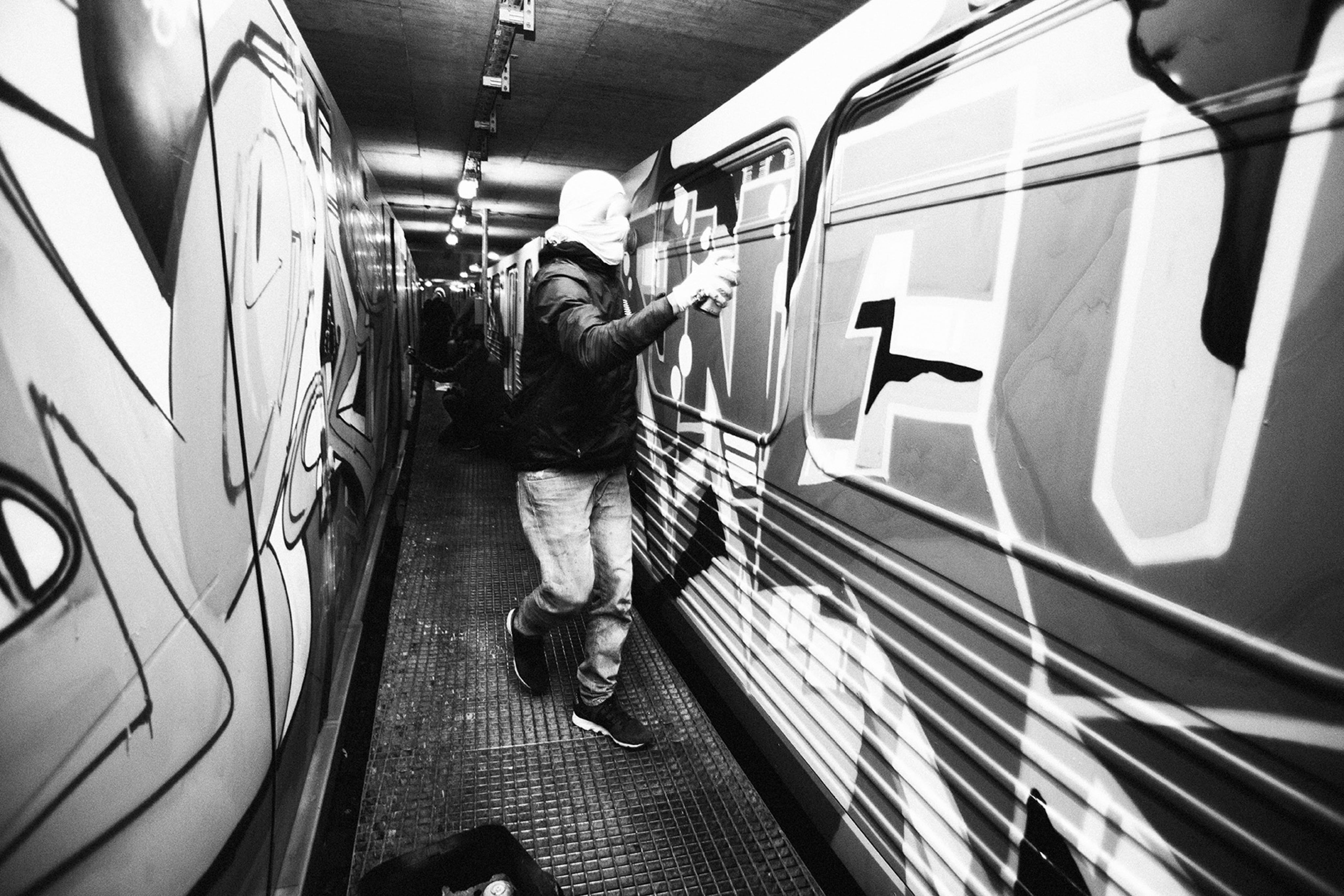
The interview was excerpted from Issue 1 of WIP – a new magazine by Carhartt Work In Progress – available in print from Carhartt WIP stores.
Credits
- Interview: Calum Gordon
- Photography: 1UP, Martha Cooper and Ninja K

